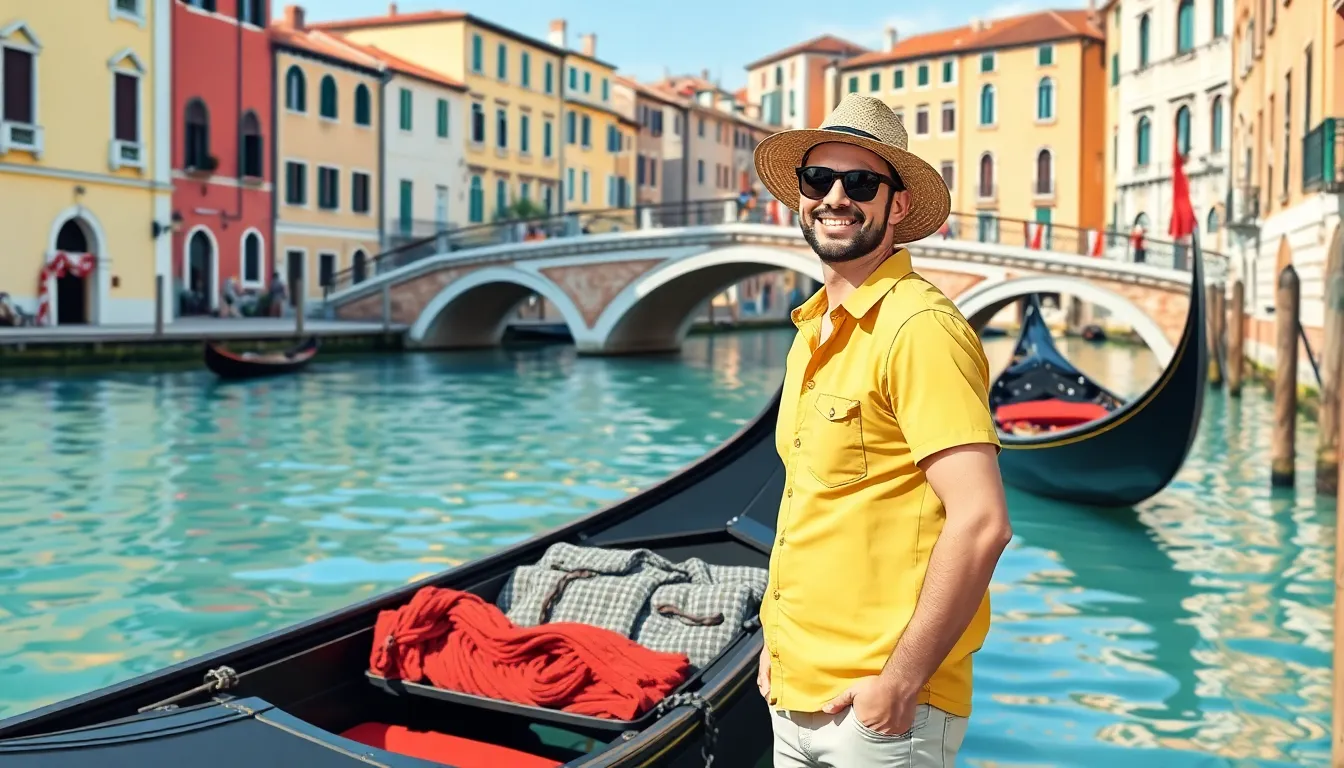Table of Contents
ToggleDreaming of sipping espresso in a quaint café or wandering through ancient ruins? Italy’s got it all. From the romance of Venice’s canals to the breathtaking landscapes of Tuscany, every corner of this boot-shaped wonderland beckons travelers. But before packing those bags and donning a stylish scarf, it’s essential to arm oneself with some savvy travel tips.
Essential Italy Travel Tips
Pack light to navigate Italy’s narrow streets easily. Comfortable shoes become essential due to extensive walking in historical cities and rural areas. Consider traveling during off-peak seasons, such as spring or fall, to enjoy fewer crowds and milder weather.
Learn basic Italian phrases. Speaking simple greetings creates a positive impression and encourages locals to engage. Respect local customs, like dressing modestly when visiting churches, to enhance the travel experience.
Make reservations for popular attractions. Securing tickets in advance prevents long wait times at sites like the Vatican and the Uffizi Gallery. Understand that public transportation works efficiently in cities. Trains connect major urban centers, while buses serve smaller towns, making travel convenient.
Dining out in Italy means embracing traditional meal times. Lunch typically occurs between 1 PM and 3 PM, with dinner starting around 8 PM. Expect to pay extra for table service in restaurants, so clarify whether a service charge is included.
Cash remains essential for small purchases. Although credit cards are widely accepted, many local shops and markets only accept cash. Tipping is appreciated, with rounding up the bill or leaving small change common practices.
Stay aware of pickpockets, especially in crowded tourist areas. Keeping belongings secure helps prevent theft. Finally, download offline maps and useful travel apps ahead of time, ensuring seamless navigation throughout the journey.
Planning Your Trip

Planning a trip to Italy involves considering various factors to ensure a smooth experience. Travelers can maximize their enjoyment by paying attention to timing and necessary documentation.
Best Time to Visit
Travelers often find that the best time to visit Italy falls between April and October. Spring offers pleasant weather with blooming landscapes, while autumn presents stunning foliage and fewer crowds. The summer months, although warmer, draw larger numbers of tourists, particularly in popular cities like Florence and Venice. For those seeking lower prices, visiting during the shoulder seasons of late autumn or early spring can provide significant cost savings. Events such as local festivals often occur during these months, enhancing cultural experiences.
Required Travel Documents
Travelers need specific documents to enter Italy, especially for non-European Union citizens. A valid passport is essential, with a minimum validity of three months beyond the planned departure date. For tourists staying less than 90 days, a visa isn’t necessary. However, longer stays may require a visa application. Additionally, travelers should carry copies of important documents, such as travel insurance and accommodation details, for added security. Valid identification, especially for domestic flights and train travel, helps avoid complications and maintains a seamless experience throughout the journey.
Transportation in Italy
Traveling around Italy offers various options for getting from one destination to another efficiently. Understanding available transport choices enhances the overall travel experience.
Public Transport Options
Buses, trains, and trams connect major cities and regions effectively. Trains, operated by Trenitalia and Italo, provide fast services between cities like Rome, Florence, and Milan. Ticket purchases can occur online or at stations, with discounts available for advance bookings. In urban areas, buses and trams offer an economical way to explore. Consider purchasing a daily transport pass for unlimited travel within a set period. Also, be mindful of validating tickets before boarding to avoid fines.
Renting a Car
Renting a car presents flexibility for those wanting to explore rural areas and smaller towns at their own pace. Numerous car rental companies operate throughout Italy, particularly at airports and train stations. An International Driving Permit complements a regular driver’s license, facilitating smoother rentals. Navigational apps can assist with directions, but driving in cities can be challenging due to narrow streets and limited parking options. Opting for smaller vehicles can make maneuvering easier. Always check local regulations, such as ZTL zones, where access restrictions apply.
Accommodation Choices
Finding the right place to stay greatly influences the Italian travel experience. Various accommodation types cater to different preferences and budgets.
Hotels vs. Rentals
Hotels offer a range of amenities and services, ensuring comfort and convenience. Choosing a hotel provides access to daily housekeeping and on-site dining options. Rentals, such as apartments or villas, deliver a home-like atmosphere and a chance to experience local neighborhoods. Guests can enjoy a kitchen, making meal preparation an option. Many travelers prefer rentals for extended stays, as they often provide more space and flexibility. Both options successfully accommodate diverse needs.
Budget-Friendly Options
Italy offers several budget-friendly accommodation choices. Hostels represent an economical solution, featuring shared dormitories or private rooms that appeal to solo travelers and groups. Agriturismos, working farms that provide lodging and meals, present a unique experience in the countryside. These establishments often give guests an authentic taste of local culture. Additionally, many cities feature affordable bed and breakfasts that provide a cozy atmosphere and personal touch. Booking in advance can help secure lower rates, particularly during peak travel seasons.
Cultural Etiquette
Cultural etiquette plays a vital role in navigating Italy’s vibrant social landscape. Respecting local customs deepens the travel experience.
Common Customs
Greeting locals with a friendly “Buongiorno” or “Buonasera” sets a positive tone. Shaking hands is typical when meeting someone for the first time, while hugs and kisses on the cheek are common among friends. Dinner invites often include sharing meals leisurely as Italians value time spent at the table. Tipping is appreciated, though not mandatory; rounding up the bill or leaving small change shows gratitude. Additionally, maintaining a respectful demeanor in sacred spaces demonstrates awareness of Italian culture.
Language Tips
Learning basic Italian phrases enriches interactions and enhances the travel experience. Simple expressions such as “per favore” (please) and “grazie” (thank you) go a long way. Efforts to speak the language, even if limited, are appreciated by locals. Asking for assistance using “Mi scusi” (excuse me) or “Dove si trova…?” (Where is…?) can lead to helpful responses. Sticking to polite tones during conversations fosters goodwill, making the journey through Italy more enjoyable. Carrying a phrasebook or translation app aids effective communication, especially in less touristy areas.
Food and Dining
Italy is renowned for its rich culinary heritage, offering a delightful array of flavors and dishes. Eating in Italy transcends sustenance; it embodies culture and tradition.
Must-Try Dishes
Pasta stands as a staple in Italian cuisine. Choose varieties like spaghetti carbonara or tagliatelle al ragù for authentic flavors. Pizza, particularly Neapolitan, features a thin crust topped with fresh ingredients. Risotto from Milan, creamy and rich, creates a comforting dish. For a sweet finish, taste tiramisù, a coffee-soaked dessert that captivates the palate. Gelato, Italy’s famous ice cream, offers endless flavors to explore. Street food, such as arancini (fried rice balls) and suppli (fried rice croquettes), showcases local delights. Each region presents unique specialties, providing an opportunity to savor the local culture through food.
Dining Etiquette
Dining times differ significantly in Italy. Lunch typically occurs between 1 PM and 3 PM, while dinner usually starts around 8 PM. Italians emphasize leisurely meals rather than quick dining experiences. It’s courteous to greet staff upon entering a restaurant. Tipping norms are relaxed; leaving small change suffices rather than large gratuities. Expect potential extra charges for table service in some locales. Water served at restaurants often comes bottled, and opting for tap water may not be the norm. Knowledge of food courses benefits diners; an antipasto precedes the main meal, and dolci follows. Understanding these customs ensures a respectful dining experience while enjoying Italy’s vibrant culinary scene.
Traveling to Italy offers a rich tapestry of experiences that can be enhanced with thoughtful preparation. By packing wisely and embracing local customs, travelers can connect more deeply with the culture. Understanding transportation options and making reservations for popular attractions can save time and enhance enjoyment.
Exploring Italy’s culinary delights and adhering to dining etiquette will create memorable meals and interactions. As travelers embark on their Italian adventure, these tips will not only ease their journey but also enrich their appreciation for this beautiful country. With the right mindset and preparation, Italy’s charm will undoubtedly leave a lasting impression.




